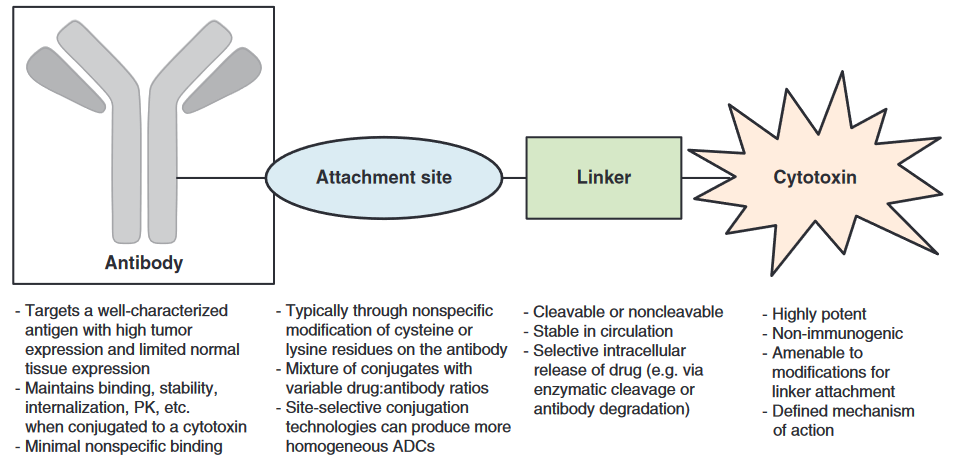An Enhertu innovation map
Forty years ago the Japanese yoghurt drink company Yakult decided it needed to diversify its business and so it set up a pharmaceuticals division. This decision was one of the many historical contingencies that eventually lead to the discovery and development of arguably the most effective breast cancer drug yet, Enhertu (generic name trastuzumab deruxtecan).
Daiichi Sankyo and AstraZeneca’s Enhertu is a member of the antibody-drug conjugate (ADC) class of drugs. ADCs are built from three main components: a targeting antibody, a chemotherapeutic drug payload, and a chemical linker that joins the antibody to the payload. By using an antibody to direct chemotherapy drugs to specific tumour-associated antigens, the hope is that chemotherapy molecules can be concentrated at the site of the tumour where they are more likely to effectively kill cancer cells and less likely to cause dose-limiting side effects. Although ADCs faced a number of setbacks since the first attempts in the 1960s, particularly related to toxicity, the technology is now mature enough that multiple highly effective treatments for cancer have been brought to market.

In the below graphic I have outlined the chain of discoveries and innovations that led eventually to Enhertu. Modern drugs like Enhertu are the result of many converging nonlinear lines of inquiry, and so it’s somewhat arbitrary where to start the mapping and what to include. For instance, although inventions like the polymerase chain reaction, agarose gel electrophoresis, and cell culture were crucial developments, I have mostly left out general purpose biological tools and techniques.